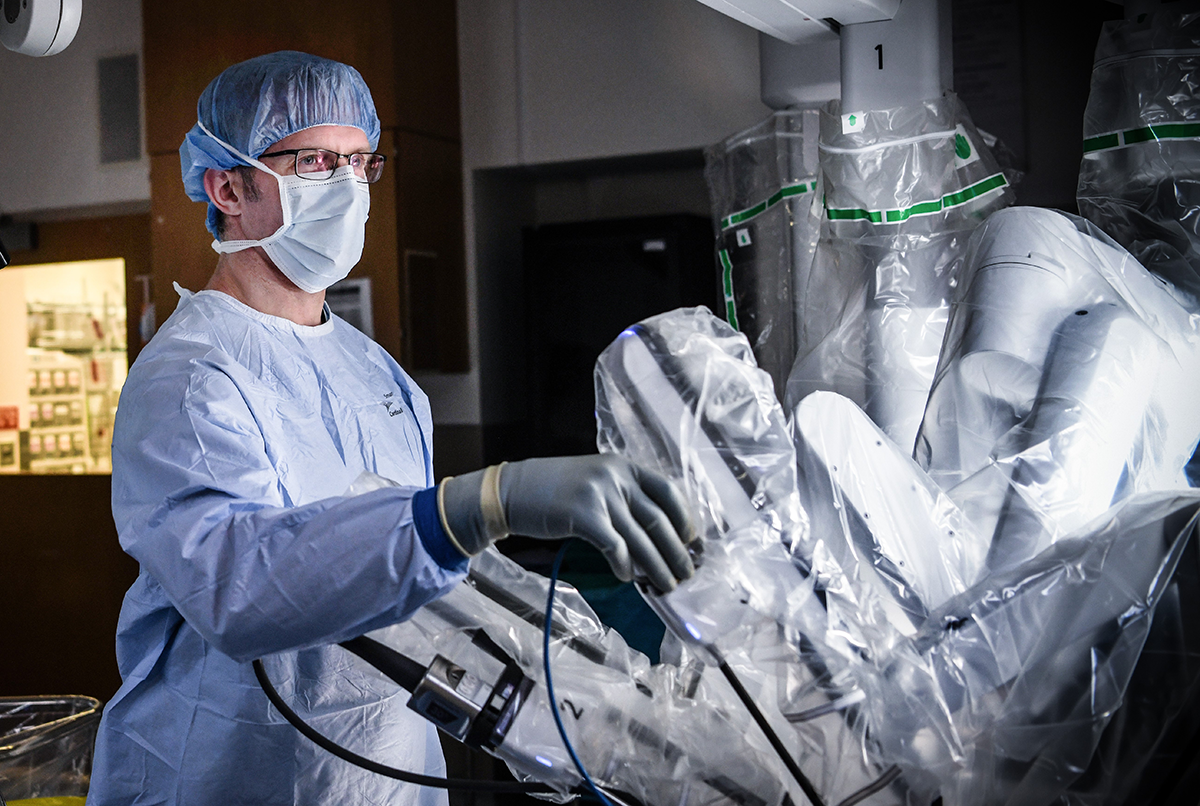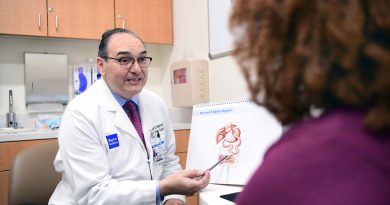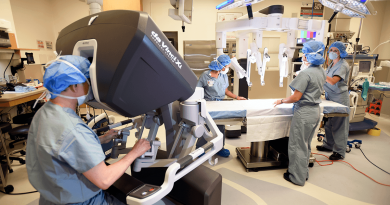Understanding robotic surgery: Why it’s a game-changer in modern medicine

Robotic surgery is a type of minimally invasive surgery that has revolutionized the medical field, offering precision, flexibility and control that can surpass traditional surgical techniques. As technology continues to advance, the capabilities of robotic-assisted surgeries expand, providing new possibilities for patient care and treatment outcomes.
It is important to clarify that robotic surgery does not involve robots performing the surgery independently. Instead, it features a highly sophisticated system that translates the surgeon’s hand movements into smaller, precise movements of instruments inside the patient’s body. The system typically consists of a console where the surgeon sits and operates the robotic arms, a patient-side cart with four interactive robotic arms and a high-definition 3D vision system. The surgeon controls the robotic arms using hand and foot controls while viewing a magnified 3D image of the surgical site. This setup allows for greater dexterity and control than conventional surgical methods, enabling surgeons to perform intricate procedures through small incisions with high accuracy.
Robotic surgery is used in many types of surgeries, from hernia repair to colorectal surgery to heart surgery and more.
Hernia repair
Dr. Michele Loor, a hernia repair surgeon at Baylor Medicine Hernia Center, is at the forefront of robotic-assisted hernia surgery, including inguinal, incisional and recurrent hernias. “By utilizing this technology, we can achieve accurate and consistent results, often leading to faster recovery times and a quicker return to daily activities for our patients,” Loor said. “This minimally invasive approach offers additional options for complex hernia repairs. Given its enhanced capabilities, robotic surgery may improve the surgical experience and enhance overall patient outcomes, making it a preferred option for many individuals requiring hernia repair.”
Colorectal surgery
In colorectal procedures, robotic-assisted surgery is used to perform complex tasks such as resecting sections of the colon or rectum affected by cancer, removing polyps and addressing conditions like diverticulitis and inflammatory bowel disease. The robotic system allows surgeons to navigate the intricate anatomy of the colorectal region with enhanced precision, reducing the risk of damage to surrounding tissues and organs.
“We use the robot because this minimally invasive technique often results in smaller incisions, less postoperative pain, reduced blood loss and faster recovery times for patients,” said Dr. Atif Iqbal, Baylor Medicine colorectal surgeon. “Additionally, the improved dexterity and control afforded by the robotic system can lead to more precise dissections and suturing, contributing to better surgical outcomes and lower complication rates.”
Heart surgery
Only about 5 percent of cardiac surgeons perform robotic-assisted cardiac surgery on a routine basis. Dr. Kenneth Liao, a Baylor Medicine heart surgeon and Texas Heart Institute faculty member, is one of them. In fact, he has recently surpassed 600 robotic heart surgeries.
“The benefit of the robot is precision,” Liao said. “It is a very precise instrumentation [with] accuracy and enhanced visualization. The robotic arm and instruments can operate in very confined, small areas and do very fine cutting, suturing, clipping and knot-tying to achieve all the necessary surgical maneuvers we do in open heart surgery but in a closed, small space. This leads to many benefits [for] the patient, including a smaller incision, less blood loss and quicker recovery. Those things added up are huge for the patient.”
Liao and his skilled team primarily perform two surgeries robotically:
Mitral valve repair: This procedure involves correcting structural defects in the valve while preserving its function. The process often includes removing excess tissue, reshaping and reconstructing the valve and reinforcing it with a band or ring.
Coronary artery bypass grafting (CABG): This surgery treats coronary artery disease by harvesting healthy arteries from the chest wall and grafting them onto coronary arteries to bypass blockages, thereby improving blood flow to the heart. Remarkably, these surgeries are performed while the heart continues to beat.
Thoracic surgery
Thoracic surgeons specialize in everything in the chest besides the heart. Dr. Shawn Groth, associate professor and chief of the David J. Sugarbaker Division of Thoracic Surgery, uses the robot for various thoracic surgeries. Groth specializes in robotic-assisted thoracic surgery, including minimally invasive esophageal cancer. In fact, he celebrated performing 100 robotic-assisted minimally invasive esophagectomies last year. An esophagectomy is a surgical procedure to remove the part of the esophagus that has a tumor and part of the stomach. He also uses the robot to perform lobectomies, a procedure to remove a lobe of the lung, typically to treat lung cancer or other severe lung diseases.
“The robot is a surgical tool; I am still doing the surgery, but with a three-dimensional view using very precise instruments through small incisions that allow us to have more dexterity than the human hand,” Groth said.
Dr. Shanda Blackmon, director of the Lung Institute at Baylor Medicine and senior faculty in the David J. Sugarbaker Division of Thoracic Surgery, also performs robotic-assisted thoracic surgeries, including pulmonary segmentectomy, a type of surgery used to treat lung cancer by removing a segment (or segments) of the lung. This procedure is considered a less invasive alternative to a full lobectomy, which involves removing an entire lobe of the lung.
“Robotic-assisted thoracic surgery, including pulmonary segmentectomy, offers patients a less invasive option with potentially quicker recovery times and fewer complications compared to traditional open surgery,” Blackmon said. “This advanced technique allows us to precisely target and remove cancerous tissue while preserving as much healthy lung as possible, ultimately improving outcomes and quality of life for our patients.”
HPB (liver and pancreas)
Due to their precision and minimally invasive nature, robotic-assisted techniques are increasingly used in hepato-pancreato-biliary (HPB) surgery. These techniques are employed in a variety of procedures, including liver resections for tumors or diseased tissue, pancreatic resections like the Whipple procedure and distal pancreatectomy.
“Robotic systems enhance the surgeon’s ability to navigate complex anatomy and perform precise dissections and suturing, which is particularly beneficial in the reconstructions required for removal of pancreas tumors,” said Dr. William Fisher, Baylor Medicine surgeon.
By Tiffany Harston, communications associate in the Michael E. DeBakey Department of Surgery



